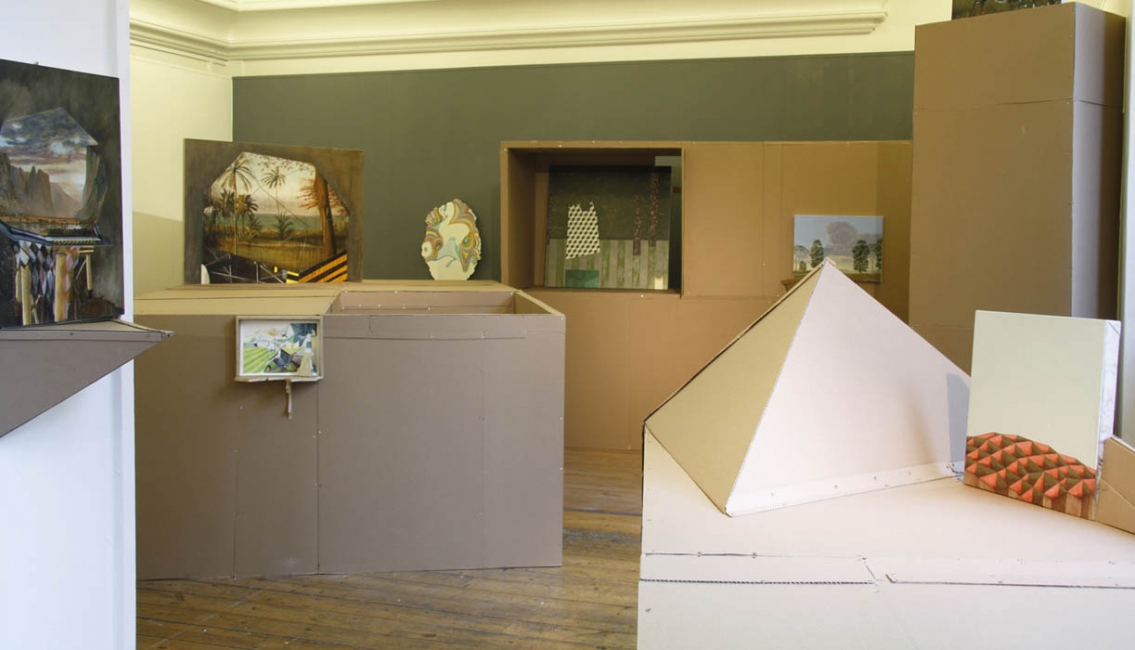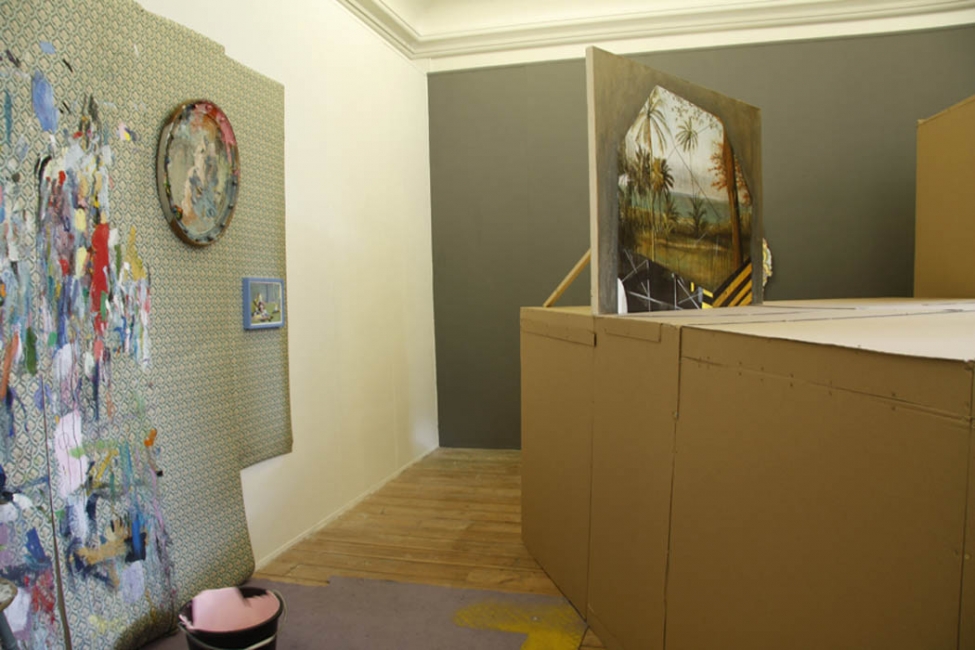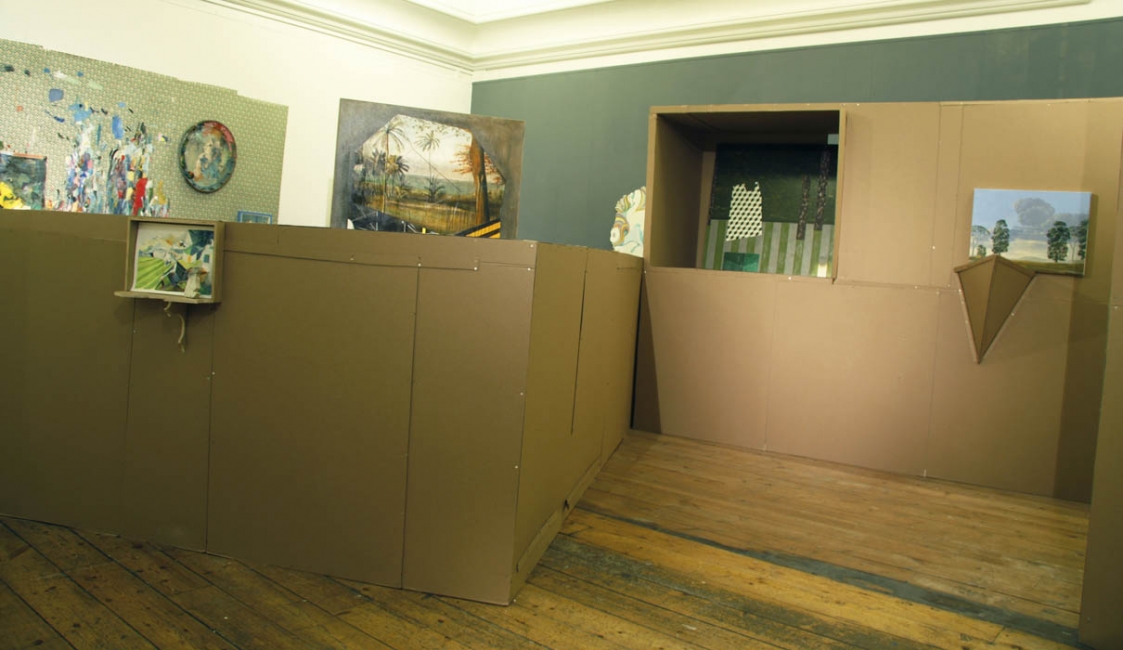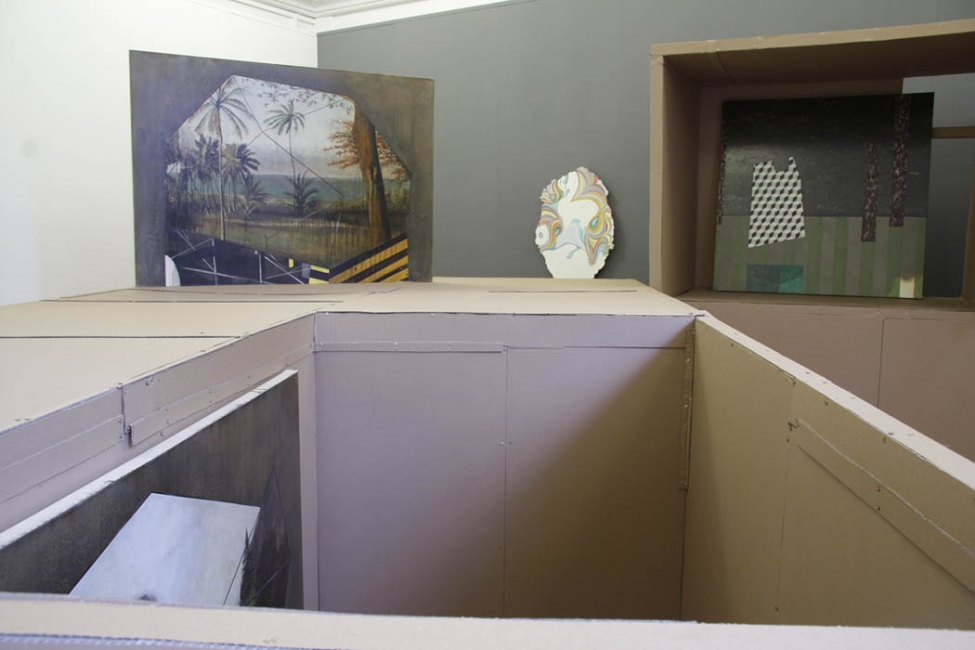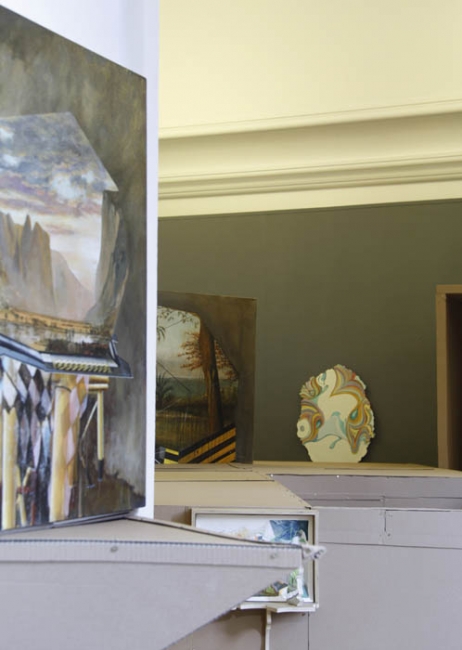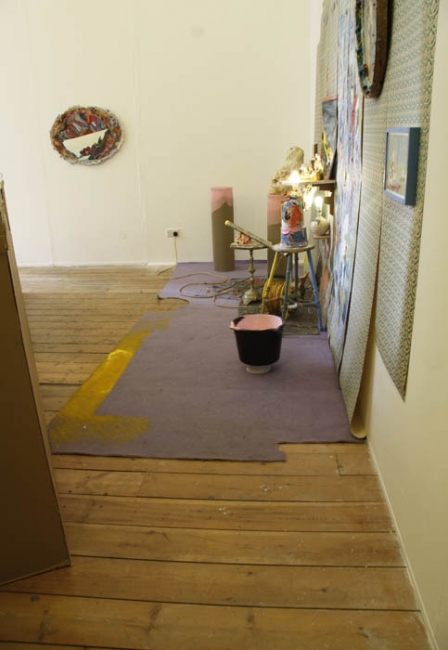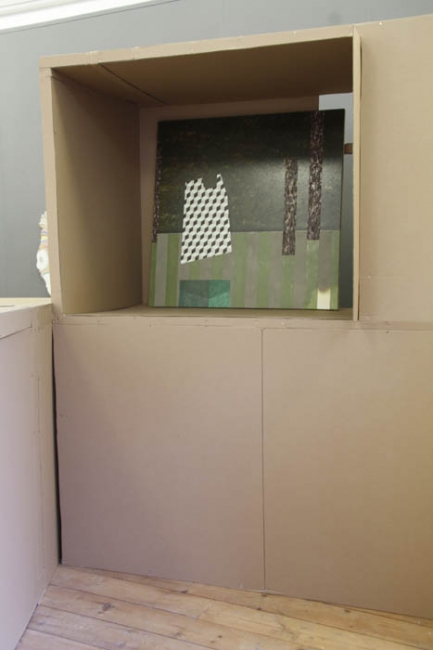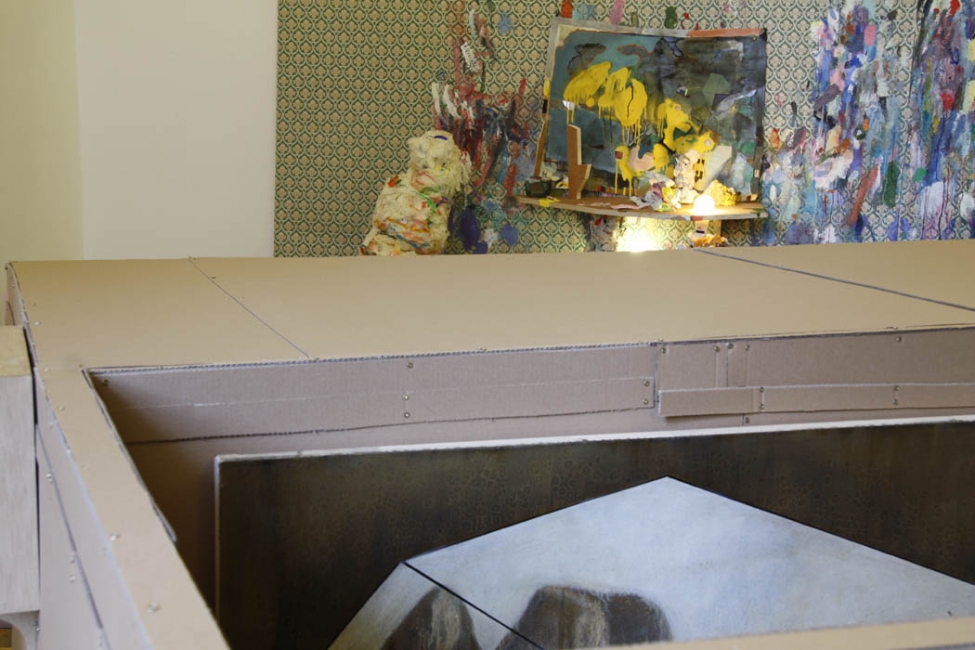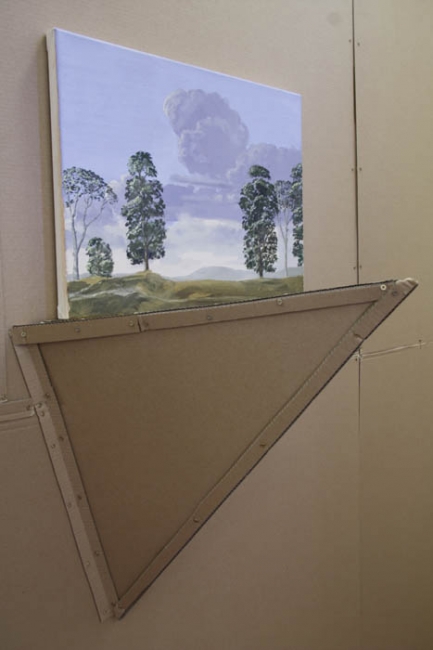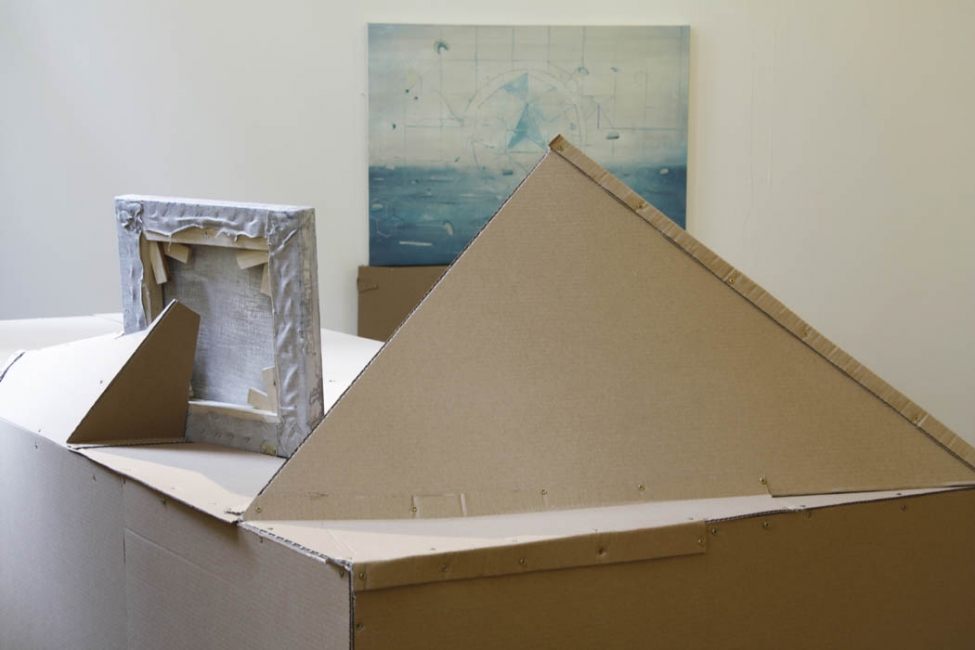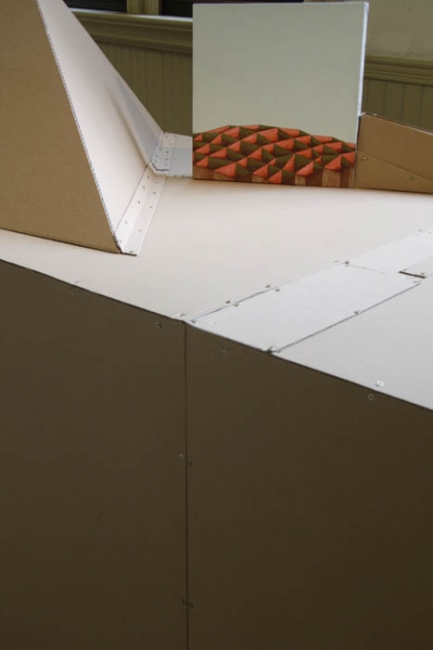Diamond Armour
Ben Cove, Dermot Punnet, John Timberlake, Paul Newman, Yvonne Hindle, Geoff Diego Litherland and Jayne Anita Smith.
Structure and Curation – Mona Casey.
Venue – Article Gallery
Diamond Armour, is influenced by JG Ballards The Crystal World, the narrative of which talks about the metamorphosis of a jungle into a crystalline form. The world once known becomes the site of a diseased and haunting beauty and the characters within the fiction, gradually submit to the impending environment. The metaphor of capitulation/ submission to the transforming landscape is useful here in talking about the curatorial staging demonstrated by the sculptural presences that perform as a support structure for the works. Cardboard stages act as a Minimal landscape onto which works are attached and take the place of gallery walls.
Diamond Armour is interested in showing painting and work that considers painting in its making as a practice, but more specifically is interested in artists who are engaged with contemporary versions of landscape. The show presents a number of artists work and is interested in the relationship between those works, but with an added twist in the tail. The aim is to question more traditional forms of presenting painting and acknowledge the sculptural aspects of the object-ness of the canvas/support for the surface painting/ work itself. Some of the works will have individual plinth/ platforms others will inhabit individual niches, and as such the borders, backs of the support will be exposed for viewing by the audience, in an attempt to examine the illusion and surface of the painted/ art object. The cardboard structure is a physical manifestation of the curatorial concept and acts as ‘interference’ in the presentation of the work. The form is an attempt at structuring and designing the space onto which works will sit whilst also creating an underlying narrative.
Dermot Punnet explores image, appearance and the foldedness of painting. He combines representation and geometric abstractions within the work as a way of trying to understand and internalise perception and experience, whilst reflecting on a sense of modern day anxiety. Yvonne Hindle, creates work that considers paint as a physical stuff and creates abstract and sublime spaces, through an intense layering of paint. Her work juxtaposes fluid applications with rigid forms to build a seductive and colorful world, which engage with ideas of time and change. John Timberlake makes images through a variety of media including photography, collage and painting. His work has been characterised by a sustained engagement with landscape and the sublime. His work often carries within it a sense of rupture or incompleteness, due in part to his suggestion of fragments of narrative or formally to the approach of combining media. Paul Newman’s work functions as painting or drawing, which oscillates between figuration, landscape and abstraction, an exploration of figure ground relationships and particular push – pull contradictions of pictorial space. His work is also influenced by the artist’s relationship with their studio environment and the surrounding debris from the working method often creeps into the work itself. Jayne Anita Smith’s paintings engage with concerns raised in German Romanticism, which often situate human presence as a small and insignificant element within the overwhelming and sublime landscape. Her work is about the search for a space in which to find meaning and a primitive need to connect once more with an environment that will feed our ‘inner core’. Geoff Diego Litherland uses imagery that is selected from a multitude of influences that are often chosen for their prophetic and apocalyptic undertones. Idealized romantic landscapes are held up by increasingly fragile supports, which are pieced together from the debris of spacecraft, industrial structures and painterly remains. Through the appropriation of resonating ideologies such as Romanticism and early Science Fiction, the paintings seek to not only question our perception of nature, but paintings’ historical and current role in that. Ben Cove makes painting that engage with abstract structures that often allude to and simultaneously oscillate between architectural and natural forms. Depth, flatness and linearity all combine to provide disconcerting spaces that seem momentarily familiar and then strange and other.
